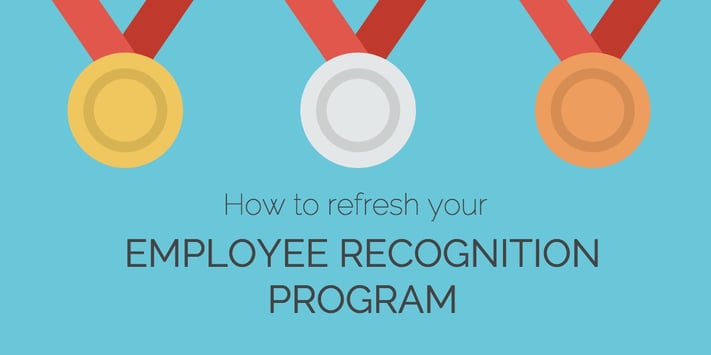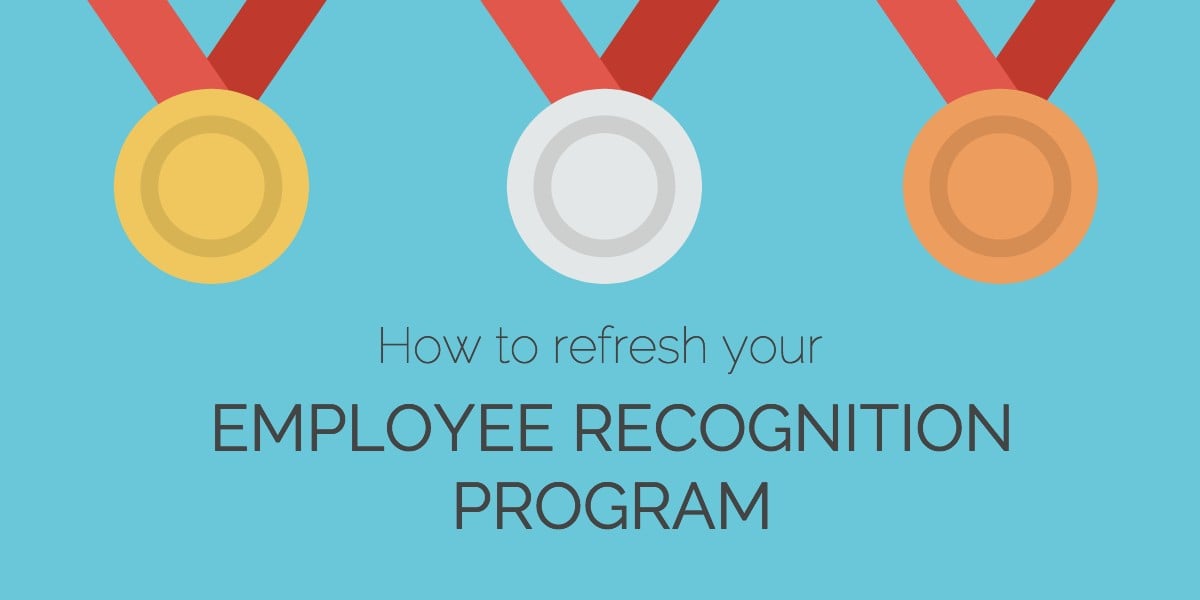
While the phrase “employee recognition” conjures up images of 10-year pins or watches for some, modern employee recognition programs should be far less formal, and far less dependent on tenure. According to HR expert Josh Bersin, “tenure-based rewards systems have virtually no impact on organizational performance.” That doesn’t mean that the whole idea of recognizing employees should be thrown out, though. It simply needs to be brought up to date.
The workforce has changed in the past generation, and most employees no longer feel compelled to stick around in a stagnant job just for the recognition of their tenure. Instead, modern workers thrive on engagement in their work. This shift can mean huge productivity gains in organizations with an engaging work culture.
That’s where a smart employee recognition program— developed to reward what matters to your company and maintain employee engagement— can be helpful. As Bersin says, “the purpose of recognition is to drive greater levels of “discretionary effort.” Such discretionary effort comes when we, as people, feel inspired to do more.” Rewarding those instances when employees perform above their expectations is an integral step in creating an engaging culture.
The results of these efforts aren’t purely intangibles, as some aspects of company culture often seem. There are impressive measurable results for companies willing to integrate recognition into their culture. In fact, Bersin’s research found that “modern, re-engineered recognition programs can have a huge impact on business performance. Companies that scored in the top 20% for building a ‘recognition-rich culture’ actually had 31% lower voluntary turnover rates.” The ability to hold onto your best employees more often is worth the effort of creating and sustaining a culture of recognition.
Unfortunately, some organizations don’t have any kind program in place to recognize great performance. Others have started programs in the past, but push them to the back burner, or only use them sporadically. If that sounds like your workplace, don’t despair! It’s always possible to make positive changes to company culture. Here are some tips for developing or revitalizing an employee engagement program that can create a better workplace.
Get buy-in from employees
When starting or refreshing a staff initiative like a recognition program, it’s always a good idea to get input from the people who will use it the most. Send out an email to form a committee, or approach individual people to ask them to join. The goal should be to have a diverse group to represent your organization as a whole; you’ll want some more senior staff members and some newer employees, and at least one person from each department.
Plan to meet with this team a few times to get their advice about what they think would be the most effective and usable system for recognizing employees. As a team, you should look over the company’s goals and values to decide which behaviors or activities should be recognized. Ask the committee how they would like to be recognized or rewarded for a job well done. As you’re designing your new recognition program, keep these three guidelines in mind: the process should be easy, accessible, and informal.
Communicate with the staff as a whole
As you’re working on developing your recognition program with your committee, build excitement about the new initiative by talking about it with the whole office. Send out an email letting people know to be on the lookout for a new way to congratulate their colleagues for great work. Set a rollout date, and tell them that more details will be coming before that date.
Once your team has finished designing the program, make sure you communicate all the details clearly with the whole company. Show them where they can find the resources they need to recognize a colleague, and what to expect from the process. What details does the nominator need to proved? How will their nominee be recognized? How long after they’re nominated? Plan to meet with the staff as a whole, or plan several smaller, more informal meetings with individual teams.
A few final thoughts
When designing your recognition program, make sure it allows for people of all seniority levels to recognize anyone else. Peers should be able to recognize peers, employees should be able to recognize managers, and managers should (as always) be able to recognize their employees. The peer to peer nomination process can be especially important; people in the trenches together often have a much clearer picture of whose weight is pulling the most work than their managers do.
For your new employee recognition program to work, it needs to get widespread adoption. At the beginning, you may need to recognize the employees who take the time to nominate a peer, as well as the peer they nominated. Thank staffers for participating in the process.
It’s important that all recognition is tied to a specific outcome or behavior that you want to reward. While many companies use an “employee of the month” system to recognize people who everyone likes working alongside, this distinction can be too vague if it’s not tied to specific actions.
As your program becomes more ingrained in the corporate culture, make sure you continue to thoughtfully share the impressive work your staff is doing. Share success stories in company meetings, newsletters, or conference calls so employees can be aware of what their peers are up to. Not only does recognition motivate the person whose work is being noticed, but it can encourage stronger performance from their coworkers.

